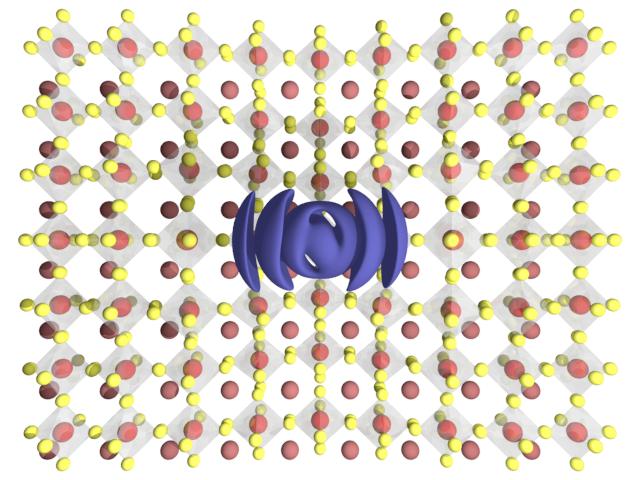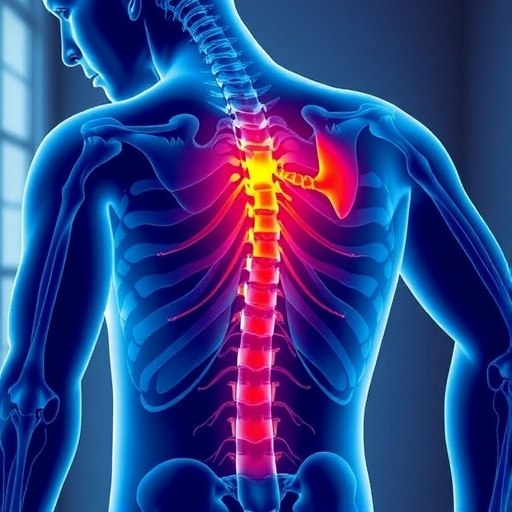McGill University researchers gain new insight into the workings perovskites that could lead to more efficient and cheaper solar cells

Credit: Colin Sonnichsen
Researchers at McGill University have gained new insight into the workings of perovskites, a semiconductor material that shows great promise for making high-efficiency, low-cost solar cells and a range of other optical and electronic devices.
Perovskites have drawn attention over the past decade because of their ability to act as semiconductors even when there are defects in the material’s crystal structure. This makes perovskites special because getting most other semiconductors to work well requires stringent and costly manufacturing techniques to produce crystals that are as defect-free as possible. In what amounts to the discovery of a new state of matter, the McGill team has made a step forward in unlocking the mystery of how perovskites pull off this trick.
“Historically, people have been using bulk semiconductors that are perfect crystals. And now, all of a sudden, this imperfect, soft crystal starts to work for semiconductor applications, from photovoltaics to LEDs,” explains senior author Patanjali Kambhampati, an associate professor in the Department of Chemistry at McGill. “That’s the starting point for our research: how can something that’s defective work in a perfect way?”
Quantum dots, but not as we know them
In a paper published May 26 in Physical Review Research, the researchers reveal that a phenomenon known as quantum confinement occurs within bulk perovskite crystals. Until now, quantum confinement had only been observed in particles a few nanometres in size – the quantum dots of flatscreen TV fame being one much-vaunted example. When particles are this small, their physical dimensions constrain the movement of electrons in a way that gives the particles distinctly different properties from larger pieces of the same material – properties that can be fine-tuned to produce useful effects such as the emission of light in precise colours.
Using a technique known as state-resolved pump/probe spectroscopy, the researchers have shown a similar type of confinement occurs in bulk caesium lead bromide perovskite crystals. In other words, their experiments have uncovered quantum dot-like behaviour taking place in pieces of perovskite significantly larger than quantum dots.
Surprising result leads to unexpected discovery
The work builds on earlier research which established that perovskites, while appearing to be a solid substance to the naked eye, have certain characteristics more commonly associated with liquids. At the heart of this liquid-solid duality is an atomic lattice able to distort in response to the presence of free electrons. Kambhampati draws a comparison to a trampoline absorbing the impact of a rock thrown into its centre. Just as the trampoline will eventually bring the rock to a standstill, the distortion of the perovskite crystal lattice – a phenomenon known as polaron formation – is understood to have a stabilizing effect on the electron.
While the trampoline analogy would suggest a gradual dissipation of energy consistent with a system moving from an excited state back to a more stable one, the pump/probe spectroscopy data in fact revealed the opposite. To the researchers’ surprise, their measurements showed an overall increase in energy in the aftermath of polaron formation.
“The fact that the energy was raised shows a new quantum mechanical effect, quantum confinement like a quantum dot,” Kambhampati says, explaining that, at the size scale of electrons, the rock in the trampoline is an exciton, the bound pairing of an electron with the space it leaves behind when it is in an excited state.
“What the polaron does is confine everything into a spatially well-defined area. One of the things our group was able to show is that the polaron mixes with an exciton to form what looks like a quantum dot. In a sense, it’s like a liquid quantum dot, which is something we call a quantum drop. We hope that exploring the behavior of these quantum drops will give rise to a better understanding of how to engineer defect-tolerant optoelectronic materials.”
###
About the paper
“Polaronic quantum confinement in bulk CsPbBr3 perovskite crystals revealed by state-resolved pump/probe spectroscopy” by Colin D. Sonnichsen et al. was published in Physical Review Research.
DOI: https:/
Media Contact
Fergus Grieve
[email protected]
Original Source
https:/
Related Journal Article
http://dx.




